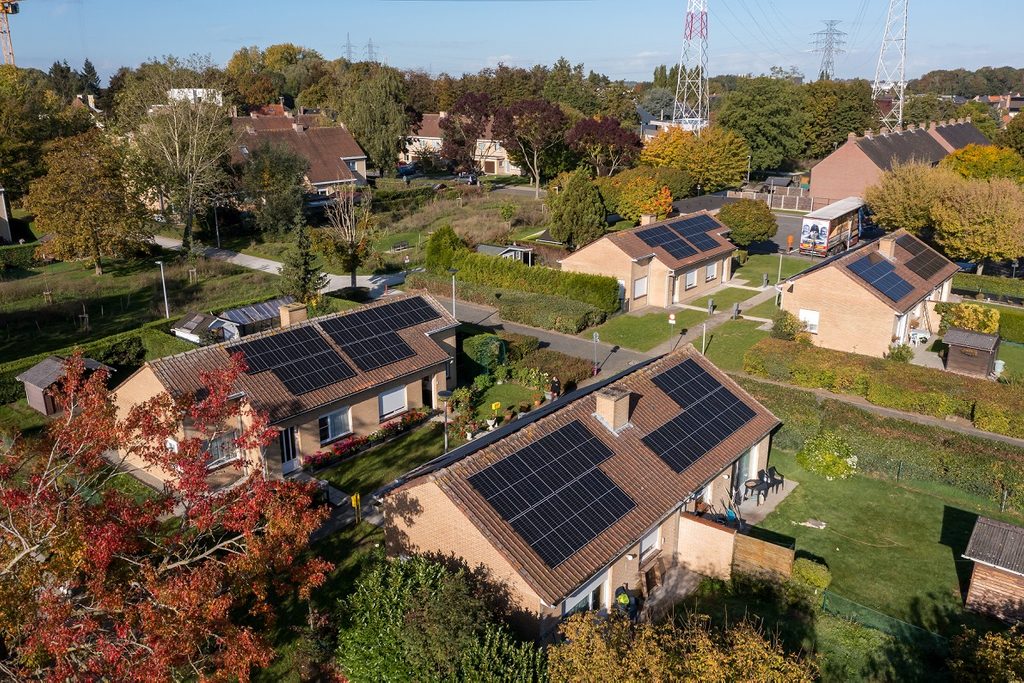The share of energy produced by solar panels and wind turbines continued to increase in Belgium last year and once again broke records. The windier-than-usual climate has helped the phenomenon.
Solar panels and wind turbines generated almost a quarter more electricity in 2023 compared to the previous year, data from high-voltage grid operator Elia showed on Monday. Total annual wind and photovoltaic (PV) generation reached an all-time high at 21.5 TWh, up by 23% since 2022.
"In 2023, 28.2% of generation came from renewable sources (compared to 19.8% in 2022), a new record," Elia wrote in a statement on Monday.
However, nuclear and gas power plants still accounted for two-thirds of total electricity generation, even though their share dropped to 66.5% from 74,2% in 2022). This was largely due to the definitive closure of the Doel 3 reactor in late September 2022 and Tihange 2 in February 2023. "But the availability rate of the remaining reactors was high. Nuclear energy still accounted for 41.3% of the electricity mix compared to 47.3% in 2022."
Gas-fired generation was in second place but it is historically low. "This can mainly be explained by still-high gas prices, increased renewable generation, increased imports and historically low consumption."
Records driven by wind
The total energy generated by solar panels (photovoltaic energy) rose significantly in 2023: the total generation was 7,193 GWh, up 12.2% since 2022.
A new record was set by the wind farms in the Belgian North Sea, with 399 turbines, entirely down to 2023 being quite a windy year, as no new offshore wind turbines were built. A total of 8,011 GWh was generated, significantly higher than the previous record (up 18% compared to the 6,779 GWh generated in 2021). December was the outlier with a record production of 1,075 gigawatt hours.
The total solar and wind generation combined reached a new quarter-hour record of 8,078 MW on 29 May 2023 – corresponding to 93% of total consumption for that quarter-hour. "It is still quite rare for half of Belgian consumption to be covered by renewable energies. In 2023, this happened almost 12.5% of the time, i.e. three times more often than in 2022," Elia noted.
Another record was set last July when, throughout the entire month, nearly 35% of Belgian consumption was covered by the country's wind and photovoltaic generation, the highest percentage on record. The amount of wind power generated was 40% higher than the same month in 2022.
On 3 June, the all-time daily record for the most solar energy generated in Belgium was set at 48.8 GWh. This is the result of the installed generating capacity being 31% higher.
Related News
- European gas prices surge following cold snap forecast
- Belgian electricity and gas consumption fall to lowest levels since 1990s
The year 2023 was also the most productive in terms of onshore wind electricity, with 6,268 GWh generated for the year as a whole, a massive 43% increase compared to the previous year. Here this can be explained both by the windy conditions but also the 10% increase in capacity. The monthly record was set in December when 866 GWh was generated.
This rise in renewable energy production is increasingly leading to negative prices on the Belgian market. Negative energy prices generally appear in periods when there is little consumption and a lot of generation. Last year, Elia noted, this occurred 2.5 % of the time.

